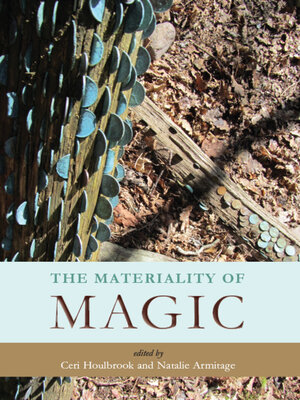The Materiality of Magic
ebook ∣ An artifactual investigation into ritual practices and popular beliefs
By Ceri Houlbrook

Sign up to save your library
With an OverDrive account, you can save your favorite libraries for at-a-glance information about availability. Find out more about OverDrive accounts.
Find this title in Libby, the library reading app by OverDrive.



Search for a digital library with this title
Title found at these libraries:
| Library Name | Distance |
|---|---|
| Loading... |
The subject of ‘magic’ has long been considered peripheral and sensationalist, the word itself having become something of an academic taboo. However, beliefs in magic and the rituals that surround them are extensive – as are their material manifestations – and to avoid them is to ignore a prevalent aspect of cultures worldwide, from prehistory to the present day. The Materiality of Magic addresses the value of the material record as a resource in investigations into magic, ritual practices, and popular beliefs. The chronological and geographic focuses of the papers presented here vary from prehistory to the present-day, including numinous interpretations of fossils and ritual deposits in Bronze Age Europe; apotropaic devices in Roman and Medieval Britain; the evolution of superstitions and ritual customs – from the ‘voodoo doll’ of Europe and Africa to a Scottish ‘wishing-tree’; and an exploration of spatiality in West African healing practices.
The objectives of this collection of nine papers are twofold. First, to provide a platform from which to showcase innovative research and theoretical approaches in a subject which has largely been neglected within archaeology and related disciplines, and, secondly, to redress this neglect. The papers were presented at the 2012 Theoretical Archaeology Group (TAG) conference in Liverpool.
The objectives of this collection of nine papers are twofold. First, to provide a platform from which to showcase innovative research and theoretical approaches in a subject which has largely been neglected within archaeology and related disciplines, and, secondly, to redress this neglect. The papers were presented at the 2012 Theoretical Archaeology Group (TAG) conference in Liverpool.







